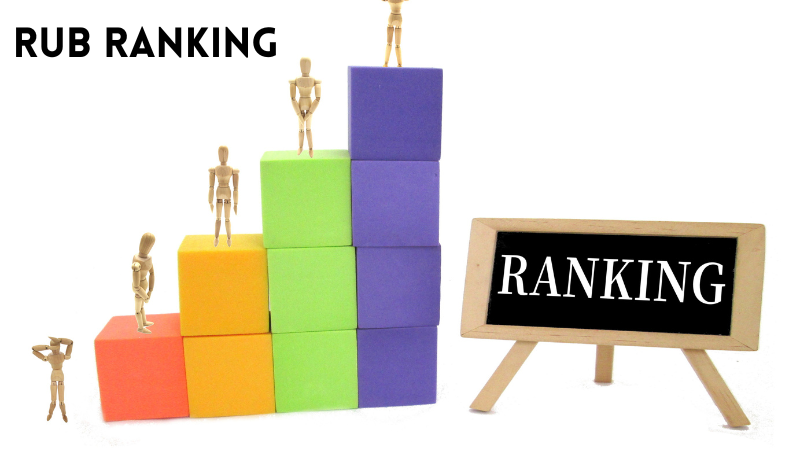One of the latest terms creating waves among optimization experts and webmasters alike is rub ranking. But what exactly does it mean? And why should marketers and content creators care?
Rub ranking isn’t just another trendy term—it embodies a more nuanced look at how ranking dynamics evolve based on content relevance, context, and interaction. The term may be unfamiliar to many, but the principles it describes are deeply rooted in what already drives search success: relevance, usability, and performance.
What Is Rub Ranking?
Rub ranking refers to an interpretive method of evaluating and adjusting web page rankings based on multiple semantic, behavioral, and technical cues. Think of it as the “rub” between user intent and search engine logic—a blend of the friction, fit, and feedback that influences how content moves up or down in search results.
Unlike static ranking metrics like domain authority or link count, rub rankng focuses on how search engines adapt rankings in real-time or over short intervals, based on user engagement signals and contextual relevance. This includes bounce rates, session time, keyword harmony, page structure, and trustworthiness.
Where Did the Term Rub Ranking Come From?
Though not officially coined by Google or any specific SEO platform, “rub ranking” appears to have originated from SEO forums and black-hat communities trying to explain irregular, fluctuating rankings caused by sudden shifts in algorithm interpretation. Over time, the concept has been refined into a legitimate framework for understanding how pages can unexpectedly rise or fall.
This frictional interaction—or the “rub”—is essentially the clash between algorithm expectations and real-world user behavior.
Rub Ranking in Search Engine Optimization
In practical SEO, rub ranking represents the dynamic interplay of many micro-signals. While traditional SEO might look at keyword density and backlinks, rub ranking asks:
-
Is this page satisfying the user?
-
Is it contextually richer than its competitors?
-
Are people actually staying and interacting?
Modern SEO strategies are already leaning into rub ranking without naming it as such. Structured data, semantic optimization, and behavioral metrics all support this approach.
How Rub Ranking Impacts Website Visibility
When rub rankig is in your favor, you might see a web page jump in the SERPs without additional backlinks or content changes. Conversely, rub ranking could drop your position if users aren’t clicking or engaging, even if the technical SEO is on-point.
Search engines interpret such fluctuations through:
-
Engagement metrics (like bounce rate or scroll depth)
-
Contextual signals (how well your content answers the user’s question)
-
Historical performance (past impressions and CTR trends)
Rub Ranking and Google’s Ranking Algorithm
While “rub ranking” isn’t a term Google uses, it reflects how Google’s RankBrain, BERT, and now Gemini (AI-driven updates) process language, context, and intent. Pages that better match user search patterns and provide conversational clarity are rewarded—even if they don’t have a billion backlinks.
User Experience’s Role in Rub Ranking
UX isn’t just a design term—it’s a ranking factor. Rub ranking reacts strongly to UX cues. If users find your content easy to navigate, fast-loading, and mobile-friendly, they are more likely to stay, convert, and return—feeding back into positive rub signals.
Which Signals Influence Rub Ranking the Most?
Rub ranking is shaped by a mix of signals:
| Type | Examples |
|---|---|
| Behavioral | CTR, time on page, bounce rate |
| Semantic | LSI keywords, topic depth, H-tags |
| Technical | Core Web Vitals, mobile-friendliness |
| Trust | HTTPS, E-E-A-T, social proof |
Focus on enhancing all four areas to see sustained growth.
High-Quality Content and Its Rub Ranking Effects
Content that is comprehensive, clear, and emotionally resonant performs better. Google wants to serve users results that feel trustworthy and human. That’s why content with varied sentence structures, transition words, and engaging formatting often sees rub ranking benefits.
FAQs about Rub Ranking
What exactly is rub ranking in SEO?
Rub ranking refers to the real-time or short-term fluctuations in page ranking due to how well content rubs against search engine expectations and user behavior cues.
Is rub ranking recognized by Google?
No, it’s not an official term by Google, but it describes patterns observed by SEO professionals over time.
How can I improve my rub raning?
Focus on semantic SEO, behavioral optimization, technical soundness, and user experience.
Is rub ranking only relevant for blogs?
No. It affects all content types, from ecommerce pages to video content, especially where engagement and intent matter.
Can AI-generated content affect rb ranking?
Yes, especially if it lacks context, clarity, or natural flow. Thin AI content can cause rub ranking drops.
Do backlinks help with rub raking?
They do, but only as part of a bigger picture. Engagement and relevance often outweigh raw link power in rub ranking scenarios.
Conclusion: Mastering Rub Ranking in the Modern SEO Landscape
Rub ranking isn’t just another SEO buzzword—it’s a practical mindset shift. It acknowledges that rankng is not static and that pages must continually prove their value to both users and search engines.
To thrive in the age of AI-driven search and user-centric algorithms, embrace rub rankng principles: optimize for people, respect the search context, and stay technically sharp.

